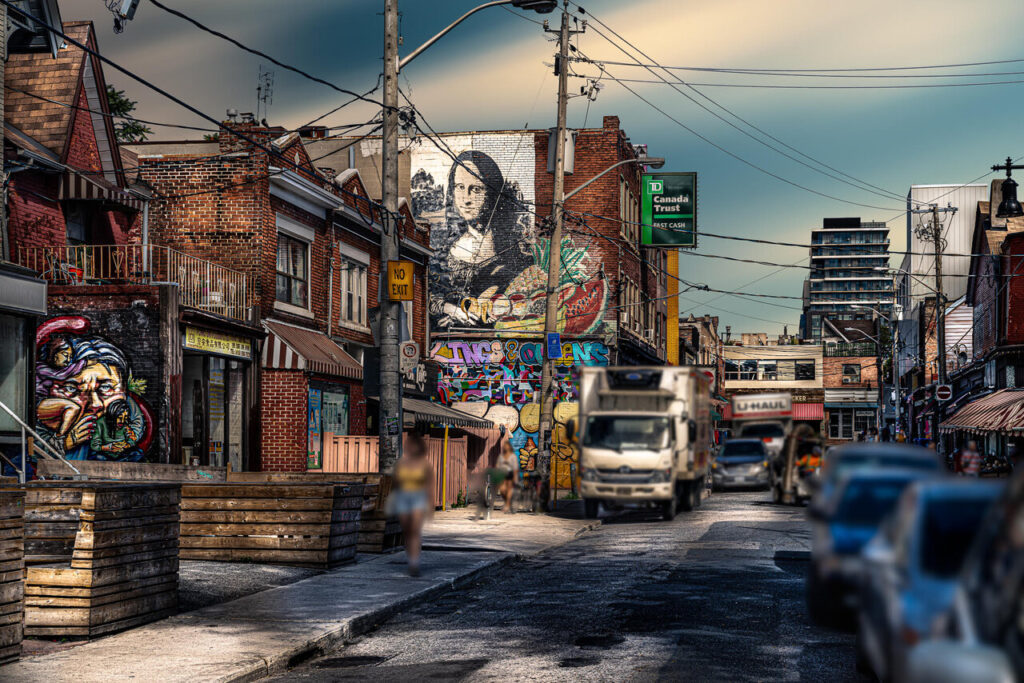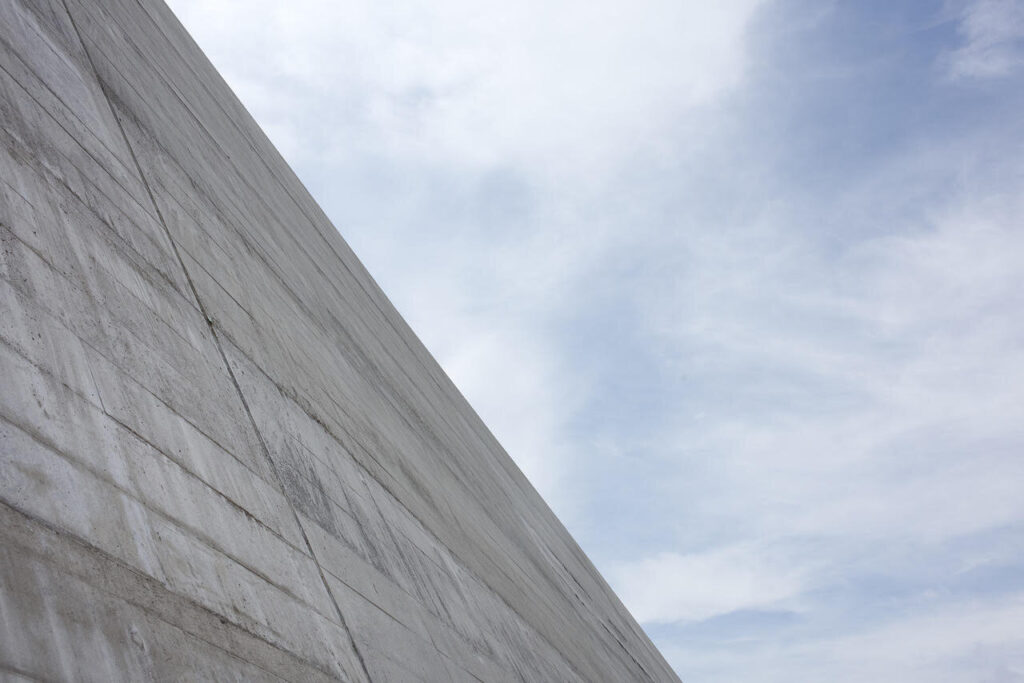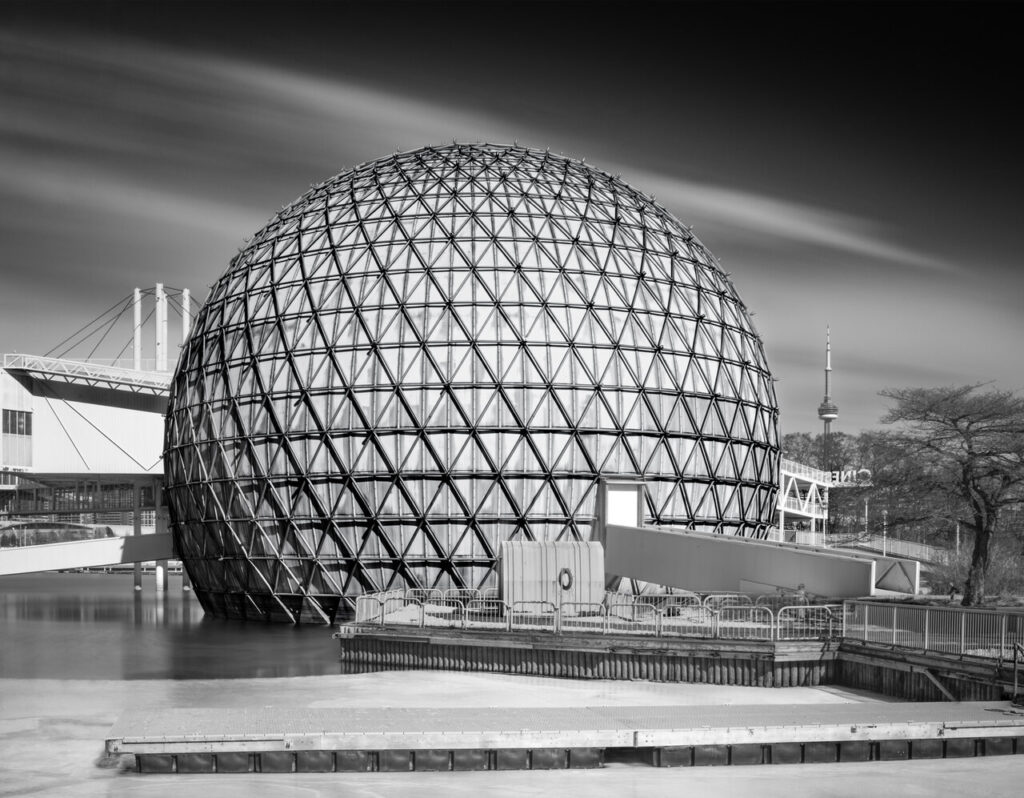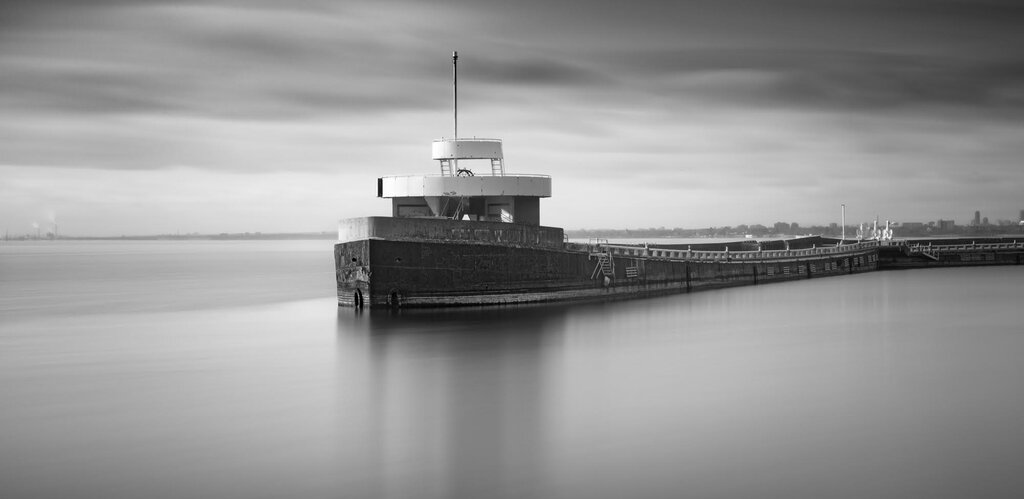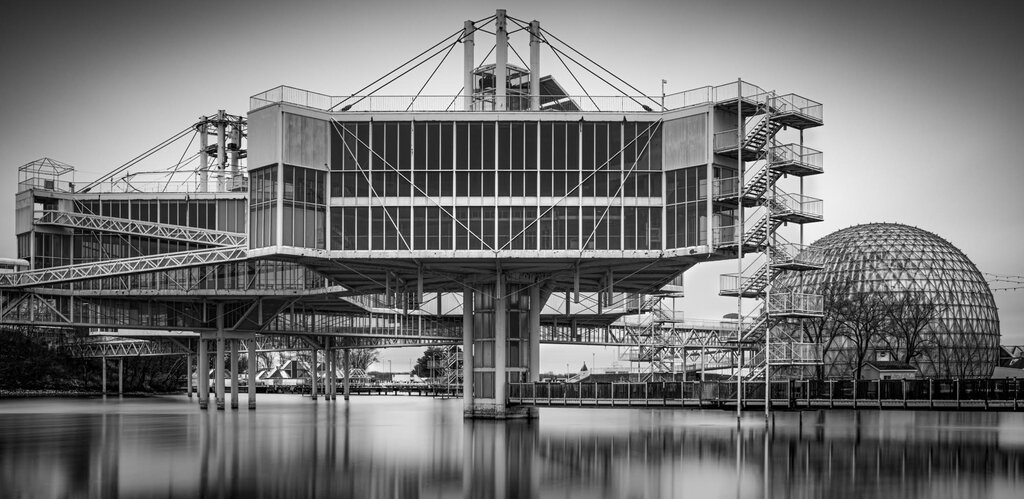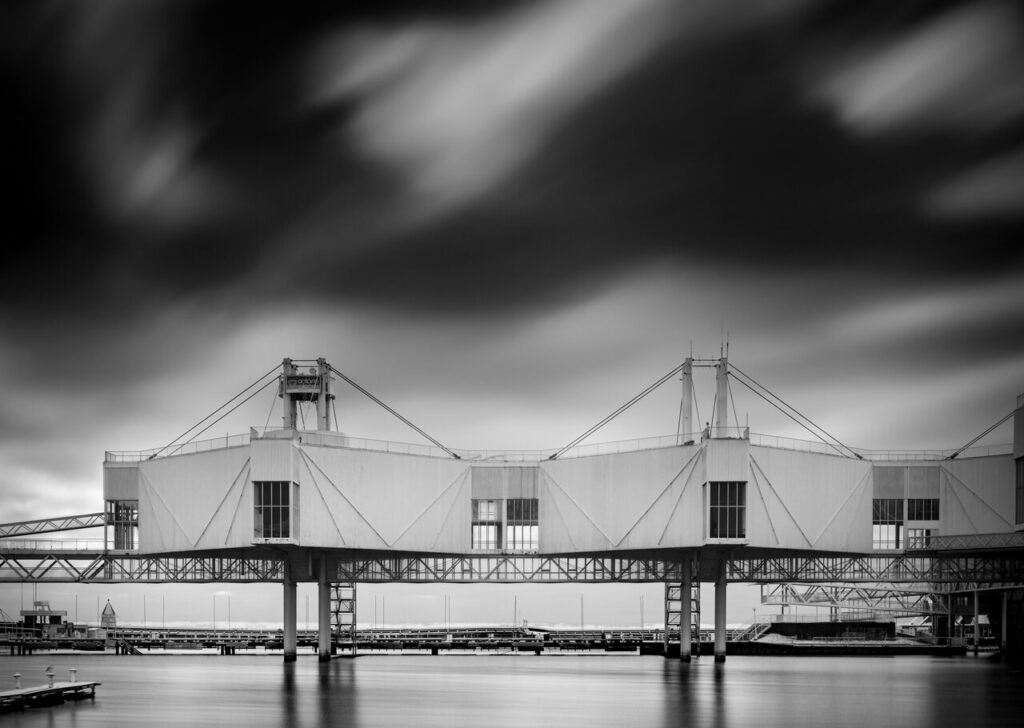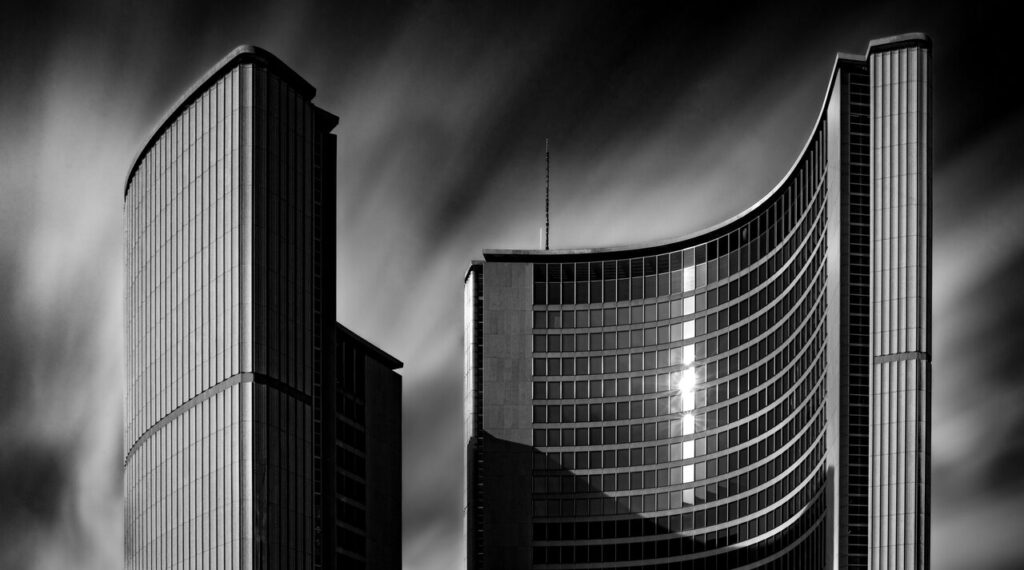Online and in its front gallery the Elaine Fleck Gallery has featured the work of Three Photographers, one of whom is Gary Ray Rush, whose work will be our focus. The other two are Bill Hornbostel and Ben Huang. Hornbostel has produced beautiful lush colour photographs of Toronto landmarks, e.g., Kensington Market.
Bill Hornbostel, Kensington Market
Huang’s photographs are the result of several trips to Japan. They document 400 km of seawalls whose construction was motivated by the devastating tsunami that hit Fukushima in 2011. They possess a haunting starkness in their austerity.
Ben Huang, Seawall #4, Rikuzentakata
Rush is a veteran photographer who has made a living from the trade as well as teaching. All the time he has dedicated himself to photography as an artform as well. Here he showcases several bodies of artwork. First and foremost, there are around nine black and white prints of various views of the largely mothballed Ontario Place. The second is a series of high resolution colour photographs of vintage cameras. Thirdly, there is a miscellany of other scenes ranging in subject matter from Toronto’s skyline to the pier at La Jolla, California. The exhibitions primary focus is on the first of these bodies of work.
Gary Ray Rush, Cinesphere 2, 2021, archival ink pigment print, 30 x 40 inches, edition 1/10
Rush’s choice of Ontario Place is not accidental. He explains that in his youth he went with his family to visit the newly opened facility down by the waterfront in Toronto. Ontario Place opened in May 1971. Recently Rush came across photos from that visit and this rekindled his interest in the site. He ended up spending a day there this past January, and then returned to the site several more times in February and March to take the shots that we see in the show.
All the pictures are in black and white. He centred his gaze on several of the site’s signature structures, such as the geodesic dome which houses the IMAX cinesphere. He also chose to shoot the so-called ‘pier one’ on the lake. The latter subject has produced some especially atmospheric images, e.g., Pier Ship. The atmosphere is partly explained by the conspicuous softness of the water and sky. This results from Rush’s technique of using very long exposure times – several minutes long in fact. The effect is to smooth out anything that moves, and that of course includes the clouds and the lake’s surface.
Gary Ray Rush, Pier Ship, 2021, archival ink pigment print, 30 x 60 inches, edition 1/10
This same technique and effect are evident in his shots of the site’s buildings, where the clouds behind them lose their definition and appear as smears across the sky. But the craft does not end there. Once Rush has the raw photographs he uses software to manipulate the images. He subtly darkens or lightens certain areas of the images, thereby emphasizing or downplaying certain details. Indeed, this addition of software manipulation has moved photography one step closer to painting. The photographer adopts the painter’s role of controlling the overall composition by means of emphasis in this manner. One can imagine how the same considerations would have been entertained by the classical landscape painter Claude Lorrain, for example, when deciding how much detail he added to the foliage in various regions of his complex compositions.
Gary Ray Rush, Ontario Place Is The Place To Be, 2021, archival ink pigment print, 30 x 60 inches, edition 1/10
What strikes me about Rush’s work is the centrality of the theme of time. His images of Ontario Place derive their significance from the past, from his childhood recollections of it. The great filmmaker Andrei Tarkovsky explained this idea beautifully. He wrote: “In a sense the past is far more real, or at least at any rate more stable, more resilient than the present. The present slips and vanishes like sand between our fingers, acquiring material weight only in recollection.” (Sculpting in Time, p. 58). The fact that the buildings he shoots, e.g., in his Ontario Place Is The Place To Be and Two Pods, are erstwhile attempts at futuristic architecture adds poignancy to this idea. What Rush gives us is his perspective on the present Ontario Place, as determined by his memories of it.
Gary Ray Rush, Two Pods, 2021, archival ink pigment print, 30 x 40 inches, edition 1/10
As well his long exposure shots effectively illustrate the present slipping away like sand through one’s fingers. It reflects more accurately our lived experience, where we can never fix on nature that it continually changes from moment to moment. Ordinarily with fast shutter speeds the camera can fix each moment, but then that moment is no longer alive – it becomes a dead vestige of the evanescent present. Slowing down the shutter speed so dramatically enables Rush to suggest the passage of time, to gesture at our subjective experience of time. And there is nothing more subjective than our memories.
Gary Ray Rush, Toronto City Hall Iconized, 2021, archival ink pigment print, 26.7 x 48 inches, edition 1/10
All told these are masterful works of photography. While focusing on his personal experience Rush has nevertheless managed to express something of universal significance. The exhibition is well worth visiting on the gallery’s website.
Hugh Alcock
Images are courtesy of Elaine Fleck Gallery
*Exhibition information: Three Photographers, May 2021, Elaine Fleck Gallery, 1351 Queen Street West, Toronto.

